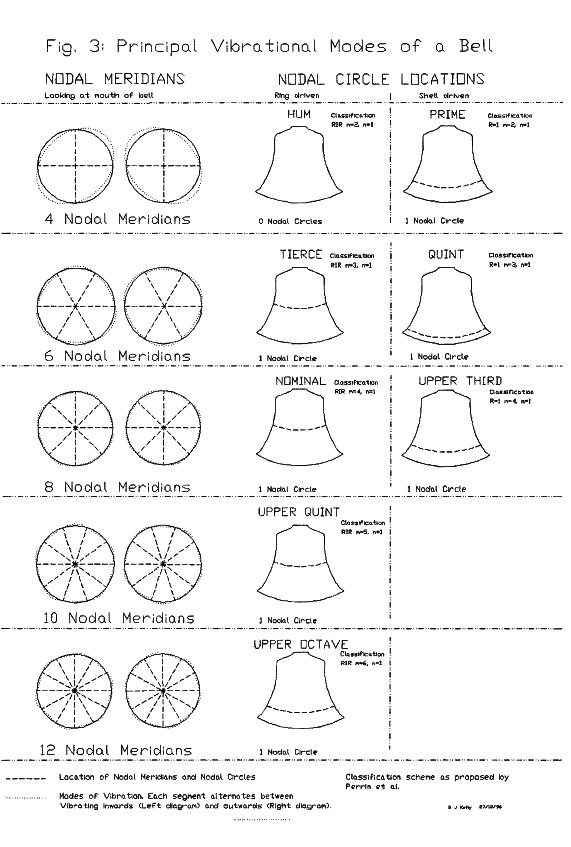
This is "Nature in Descending Regions" from Levi Walter Yaggy's 1887 Geographical Portfolio — Comprising Physical, Political, Geological, and Astronomical Geography. This popular set of maps and charts was intended for use in classrooms. Each page was 2 feet by 3 feet in size! There's so much detail, I would have gazed at these for hours when I was a kid.
Some wasps are called 'parasitoids' because they lay their eggs in still-living caterpillars. The eggs develop into larvae that eat the caterpillar from the inside.
But turnabout is fair play. Sometimes, other wasps called 'hyperparasitoids' lay their eggs in the larvae of these parasitoids!
The caterpillars also fight back. Their immune system detects the wasp's eggs, and they will do things like surround the eggs in a layer of tissue that chokes them.
But many parasitoid wasps have a trick to stop this. They deploy viruses that infect the caterpillar and affect its behavior in various ways - for example, slowing its immune response to the implanted eggs.
These viruses can become so deeply symbiotic with the wasps that their genetic code becomes part of the wasp's DNA. So every wasp comes born with the ability to produce these viruses. They're called 'polydnaviruses'.
In fact some wasps are symbiotic with two kinds of virus. One kind, on its own, would quickly kill the caterpillar - not good for the wasp. The other kind keeps the first kind under control.
And I'm immensely simplifying things here. There are over 25,000 species of parasitoid wasps, so there's a huge variety of things that happen, which scientists are just starting to understand! I had fun reading this:
The picture above was adapted from this article.
Why such diversity? I think it's just that there are so many plants! So insect larvae like caterpillars naturally tend to feed on them... in turn providing a big food source for parasitoids, and so on. Furthermore, parasitoid wasps have been around since the Permian, so if they reproduce once a year, this game has been played for about 250 million rounds, giving all the players plenty of chances to evolve new strategies.
April 19, 2024
In Africa, cows outnumber camels ten to one. But the global camel population has doubled over the last 20 years. Now Kenya and Ethiopia have launched programs to replace cows with camels!
“If there was no climate change, we would not even bother to buy these camels,” said Jonathan Lati Lelelit, the governor of Samburu, a county north of Nairobi. "We have so many other things to do with the little money we have. But we have no option."
Of course going vegan is even better, but camels have some advantages over cows. Like cows, people use them to produce milk. But they need only 85% as much water and 65% as much feed as cows per liter of milk. Even better, they can go two weeks without water! They can lose 30% of their body weight and still survive.
I got this information from here:

What's a snib? It sounds like something Severus Snape might have used in Harry Potter. It's actually just that little button on the inside of a Yale lock. But it can be dangerous.
The lock above is called a 'night latch'. It's screwed to the inside of your door. It locks automatically when you close the door. You can unlock the door from the outside with a key, or from the inside with the knob.
So far, simple. Then comes the snib button! If you slide this down, it prevents the brass latch from moving.
Say you unlock the door from the inside by turning the knob and then push down the snib when the brass latch is in its unlocked state. Now the door won't lock when you go out. This is convenient when you want to step out for a minute without your key.
You can also slide down the snib when the door is locked and you're inside. Now nobody can unlock the door from the outside! This is convenient when there's a crazed axe murderer outside who has your key.
The main danger of the snib is called 'snib drop'. This is where things get interesting.
As you’re leaving the house, after you've opened the door, you accidentally press down the snib button - not when the brass latch is in its unlocked state, but when it's poking out, in its locked state!
Normally you wouldn’t be able to shut the door with the latch in this state. But if your door is old and somewhat warped door, and you're careless, you can slam the door shut.
Now the door is locked and your key can't open it. But you don't notice this until you come back home.
Time to call the locksmith!
Here's why I'm an expert on snibs now. On April 9th our wife and I moved into our new flat in Edinburgh, which has a night latch with a snib on the front door. I'd never thought about this kind of lock before. The day before yesterday I came in and left the door open for her and some friends. I didn't use the snib since I didn't know about it. Then she came in. Later our friends came in. Later our friends left.
By this time the brass latch had somehow gotten fixed into its unlocked position, held there by the snib. So my wife told me: "Look, something is wrong. I can't lock the door!"
We couldn't figure out how to fix it. I pressed the snib button as hard as I could, but it didn't do anything since you need to slide it up and down.
We decided to unscrew the night latch from the door to see what was going on. We wound up completely disassembling it and putting it back together, watching lots of videos about night latches, before we understood how it worked. It took over an hour.
Now I realize we could have just pushed the snib button back up.
April 26, 2024
Lately I've been obsessed by Paul McCartney's song Jet. Pop music critics focus on lyrics because they're writers and they understand words better than music. So there's a lot of talk about what the lyrics mean in this song — though they're essentially nonsense designed to sound great — and not nearly enough about the startlingly abstract descending melodic line that's the centerpiece. You'll hear it in the first phrase:
and then, in a more elaborated form, in the second:
If you try to sing these lines getting the melody and rhythm exactly right, I think you'll find it hard! Or maybe I'm just bad at singing... but I don't think so — I think they're rather slippery. And so he put this melody in several extremely catchy frames:
Starting the song, a repeated ominous 4-note theme. This should remind you of the phrase "band on the run" from the title song of this album, which comes directly before this one.
A recurring bump-and-grind thing on rhythm guitar, which anchors the whole piece. This is actually reminiscent of a reggae rhythm, since leaves the 1st and 2nd silent and alternately plays either the third and fourth or just the third.
Most obviously, the shouted chorus of "Jet!" The whole band sings this, and its intense while still sounding cheery. They do it 3 times before the main lyrics come in with that descending melody. From then on, the first 2 of the 3 are followed by an insanely catchy "woo-oo-oo-oo-oo-oo". This instantly grabs everyone.
A chorus with a different type of melody:
But what about the lyrics? According to McCartney, "Jet" was the name of a cute black Labrador puppy:
She came back one day pregnant. She proceeded to walk into the garage and have this litter ... Seven little black puppies, perfect little black Labradors, and she's not black, she's tan. So we worked out it must have been a black Labrador. What we do is if either of the dogs we have has a litter, we try to keep them for the puppy stage, so we get the best bit of them, and then when they get a bit unmanageable we ask people if they want to have a puppy. So Jet was one of the puppies.Somehow this makes the line
far more cute.
The song was inspired by McCartney meeting Linda's dad — that's the "sergeant major". But Linda became Jet, and things get strange, like:
Huh? It rhymes with "Jet" in a nice way, but what's the deep reason for it? Maybe none. McCartney says:
I make up so much stuff. It means something to me when I do it, and it means something to the record buyer, but if I’m asked to analyze it I can’t really explain what it is. ‘Suffragette’ was crazy enough to work. It sounded silly, so I liked it.
So I'd say he's a master of the craft of music, willing to use lyrics mostly for their sound.
April 28, 2024

Someone on Mathstodon got me interested in the vibrational modes of bells. They're not harmonics with frequencies 1, 2, 3, 4, ... times the lowest frequency: they're much more complicated! That's why bells sound clangy. This chart shows how they sometimes work.
The lowest frequency vibrations are called:
and so on. If you think these names are illogical, join the club! One reason it's tricky is that the *loudest* vibration is not the lowest one: it's the 'prime'.
The numbers I just gave you should be taken with a big grain of salt. They really depend on the shape of the bell, and you'd have to be great at designing bells to make them come out as shown here. It's not like a violin string or flute, where the math is on your side.
This quote helps explain the chart:
Modern theory separates the modes of vibration into those produced by the "soundbow" and those produced by the remaining bell "shell". The bell vibrates both radially and axially and the principal vibrational modes are shown in the diagram together with their classification using the scheme proposed by Perrin et al. This scheme consists of the mode of vibration (RIR — Ring Inextensional Radial, RA — Ring Axial, R=n — Shell driven), the number of meridians (where “m” is half the number of meridians) and the number of nodal circles (n).
It's starting to sound like orbitals in quantum mechanics!
Another cool thing: in a bell, most of the vibrational modes are 'doublets'. So they're actually 2 modes with frequencies that are close, but not equal unless you're really careful when designing your bell!
The reason is that with an even number of nodal meridians — see the charts for what that means — there are actually 2 different ways for the bell to vibrate. Annoyingly, these 2 ways are not really shown in the charts, though you might think that's what they're showing.
What's cool is that in quantum mechanics we use the term 'doublet' to mean 2 vibrational modes of an atom with frequencies that are close but not equal. But instead of sound, the atom emits light!
I've just been learning about this right now so I could be making mistakes. Here's where I got my info:
The second one, where I got that quote, is is a labor of love by an organization that "helps churches acquire surplus and/or redundant bells to be hung for English-style full-circle bell-ringing." I love it!
But I don't like how the English say you're "redundant" when they fire you from your job — as if they suddenly noticed they'd hired two copies of you. Now I'm imagining sad redundant bells on the dole.
Brian Eno got interested in bells for his album January 07003: Bell Studies for the Clock of the Long Now. He made it to help the Long Now Foundation, back before a bunch of twits gave "longtermism" a bad name by acting like being an asshole now is good in the long run.
Here's the story:
One of their projects involves the construction of a clock, designed by W. Daniel Hillis, intended to keep time for 10,000 years. The first prototype of the clock is working and on permanent display at the London Science Museum. Eno, a member of the foundation, created this album both as a tribute to the project, and as an artistic expression of the vast swathes of time represented by the sheer "long-termness" of the philosophy behind the clock. About the workings of the record, Eno stated that he "naturally wondered what kind of sound it could make to announce the passage of time" and that he "had nurtured an interest in bells for many years, and this seemed like a good alibi for taking it a bit deeper".The sounds on the album are entirely synthesizer-based, although Eno studied the actual physics of bell tones in order to simulate the kinds of bells familiar to modern ears. He also tried to imagine what bells might sound like in the future, which took him "out of the bounds of current physical and material possibilities .... imagine bells with quite different physical properties from those we now know". To that end, mathematical algorithms were also used to generate some of the sounds; Eno also made use of his generative software.
Check it out! The first pieces sound like realistic bells, but some of the later ones sound stranger and have titles like "Virtual dream bells, thick glass".
The above chart comes from here:
It is shown that the modes of vibration of the bell can be classified into families according to their behaviour under the symmetry operations of the undistorted bell. These families are characterized by the number of nodal meridians rather than the number of nodal circles used in the usual ad hoc classification scheme. The phenomenon of bell warble is shown to be a direct consequence of the approximate nature of the symmetries of real bells and a new practical method for removing warble is suggested. It is argued that certain misshapen medieval bells were eccentrically cast not because of poor technique but deliberately in order to reduce warble.